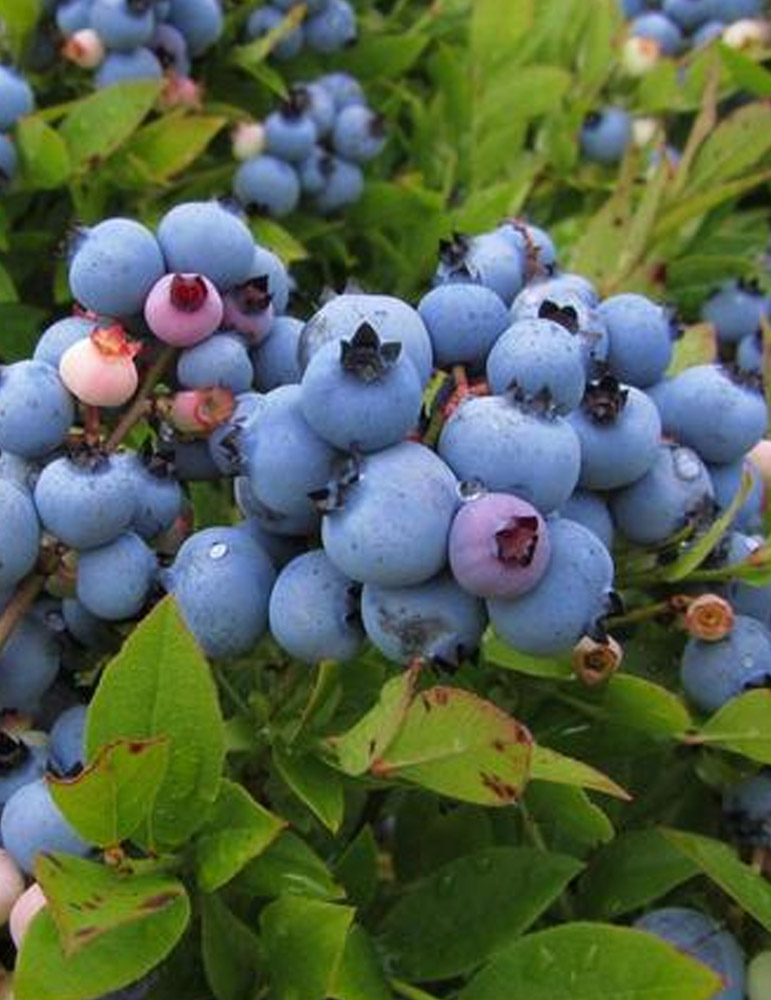
Growing blueberries requires the right soil conditions, proper watering, adequate sunlight, and regular maintenance. Here's a step-by-step guide on how to grow blueberries:
Soil: Blueberries prefer acidic soil with a pH range of 4.5-5.5. Test your soil pH and, if necessary, amend it by adding elemental sulfur or acidic organic matter like peat moss. The soil should be well-draining and rich in organic matter.
Variety selection: Choose blueberry varieties that are well-suited to your climate and growing conditions. Some varieties are better suited for colder regions, while others thrive in warmer climates. Consider factors like chill hours (the number of hours below 45°F/7°C), disease resistance, and desired fruit characteristics when selecting the variety.
Planting: Blueberries are typically planted in the spring or fall. Dig a hole that is twice as wide and as deep as the root ball of the blueberry plant. Space the plants at least 4-5 feet apart to allow for good air circulation. Place the plant in the hole, ensuring that the crown (where the roots meet the stem) is level with the soil surface. Backfill the hole with soil, firming it gently around the roots.
Watering: Blueberries need consistent moisture, especially during the growing season. Water the plants deeply and regularly, aiming for about 1-2 inches of water per week. Avoid overwatering, as blueberries are susceptible to root rot. Mulching around the base of the plants can help conserve moisture and suppress weed growth.
Sunlight: Blueberries require full sun to produce optimal fruit. Choose a location that receives at least 6-8 hours of direct sunlight per day. In hotter regions, some afternoon shade can be beneficial to protect the plants from scorching.
Fertilizing: Blueberries have specific nutritional requirements. Apply a balanced, slow-release fertilizer formulated for acid-loving plants in early spring. Follow the instructions on the fertilizer packaging for the recommended application rates. Avoid overfertilizing, as excessive nitrogen can result in lush foliage but reduced fruit production.
Pruning: Prune blueberry bushes annually to maintain their shape, encourage new growth, and remove any dead or diseased branches. Prune in late winter or early spring before new growth begins. Thin out crowded branches to improve airflow and light penetration.
Pest and disease management: Blueberries can be susceptible to pests such as aphids, fruit flies, and birds. Use appropriate methods to control pests, including physical barriers, insecticidal soaps, or organic insecticides. Monitor your plants regularly and take action at the first sign of pest infestation or disease. Good garden hygiene, such as removing fallen leaves and fruit, can help prevent disease.
Harvesting: Blueberries are ready to harvest when they are fully ripened and have developed their characteristic color. Gently pluck the berries from the bushes, being careful not to damage the delicate fruit. Harvesting usually occurs in the summer, depending on the variety and location.
With proper care and attention, you can successfully grow blueberries in your garden or even in containers. Enjoy the flavorful fruits and reap the nutritional benefits of this delicious berry!

No comments:
Post a Comment